Decorating the living room might sound fun and intimidating for different people. However, there are designer-approved tips that will help you navigate this assignment with ease! Here are some living room decor ideas to get the momentum going!
Start with Function
Determine how you want to use the living room—entertaining, lounging, reading—to guide all design decisions.
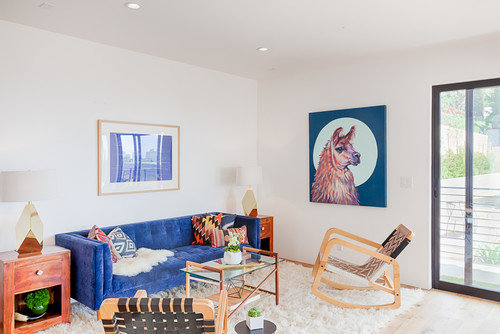
Photo by Carley M Design Studio – Browse living room photos
To effectively plan your living room, consider each activity zone.
For instance, place a plush sofa facing a media console for those family movie nights, and perhaps add a separate nook with armchairs flanking a small table for enjoying a book or hosting intimate conversations.
This approach not only ensures each area of the room serves a distinct purpose but also enhances the overall functionality and aesthetic appeal.
Remember, a well-thought-out layout can dramatically increase the usability and enjoyment of your living space.
Pick a Color Palette Early
Select a base color and complementary accent hues. Stick to it for a cohesive look.

Photo by Scott Weston Architecture Design PL – Look for living room design inspiration
Consider the mood you want to evoke in your living room when choosing your color palette.
Soft neutrals or cool pastels create a calming atmosphere, perfect for relaxation, while vibrant colors like bold blues or energizing yellows can make the space feel dynamic and lively.
Ensure that your chosen colors flow harmoniously from one area to another, which can help visually expand the space and bring your design vision to life.
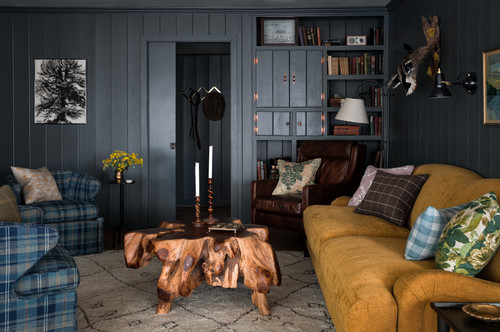
Photo by Heidi Caillier Design – Browse living room ideas
Set a Clear Focal Point
Whether it’s a fireplace, a stunning view, or an art piece, choose one main focal element to anchor the room.
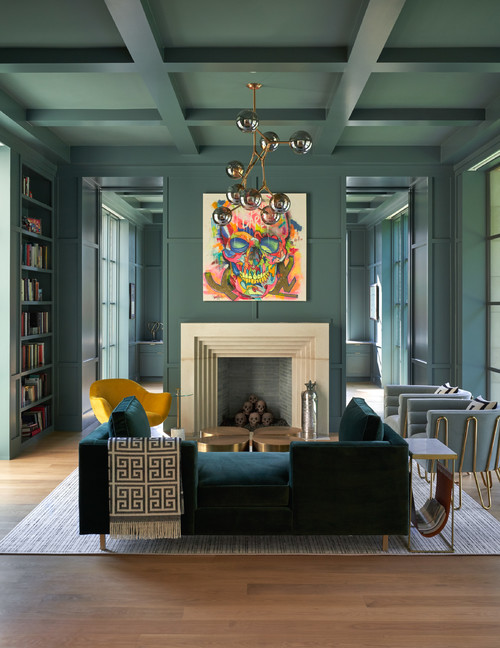
Photo by Coats Homes – Discover living room design inspiration
Once you’ve established your focal point, arrange your furniture to complement and enhance this feature.
Just like in this image above, you can also choose a focal point and place the luxurious velvet sofas and modern armchairs to face the vibrant artwork above the fireplace while creating an inviting conversation area.
Pick a Color Palette Early
Select a base color and complementary accent hues. Stick to it for a cohesive look.
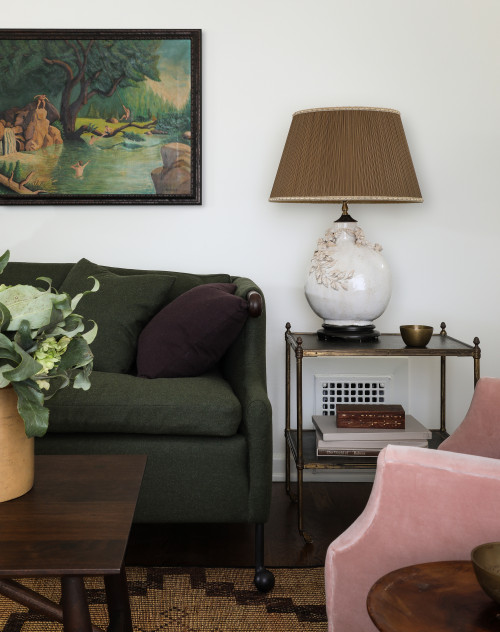
Photo by Heidi Caillier Design – Browse living room photos
After choosing your color palette, consider how different shades can define the space’s mood and style.
For instance, softer tones can create a calming atmosphere, ideal for relaxation, while vibrant colors might energize the room, perfect for entertaining.
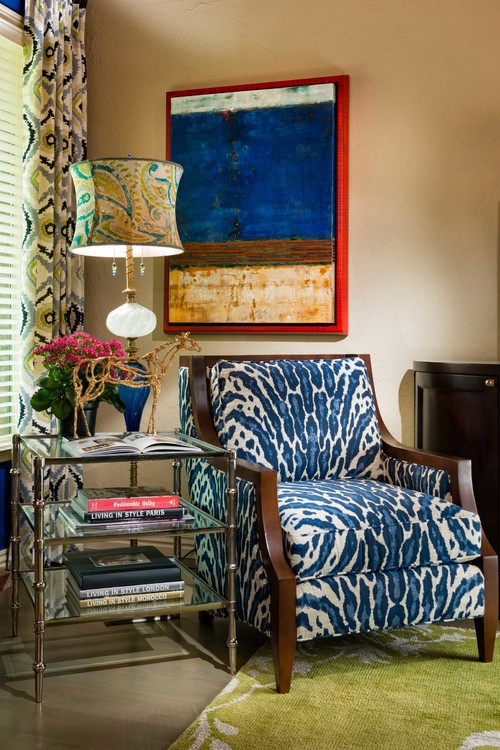
Photo by Nathan Taylor for Obelisk Home – Search living room design ideas
Use your chosen colors not just on walls but also through textiles, artwork, and accent pieces to layer the look.
This strategy will help the room feel thoughtfully curated and distinctly yours, ensuring every element works harmoniously together.
Use Contrast and Balance
Combine light and dark tones (or bright and neutral) to add interest and depth, keeping an overall sense of harmony.
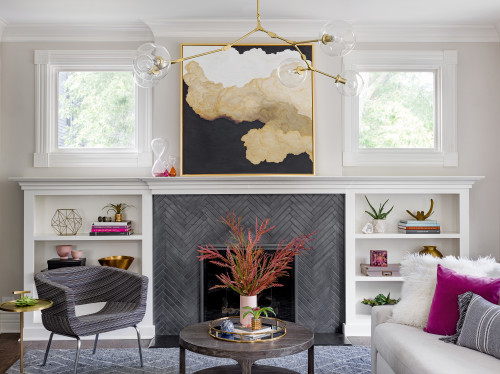
Photo by Mia Rao Design – Discover living room design inspiration
When incorporating contrasting colors, maintain balance by using them in thoughtful proportions.
For example, select a dominant shade for larger areas and use contrasting tones in smaller doses through accessories or feature walls.
This approach ensures the room remains visually engaging without feeling overwhelming.
Additionally, consider the interplay of textures and materials; combining glossy finishes with matte surfaces can further enhance the dynamic created by your color choices.
Coordinate Hardware Finishes
Match or thoughtfully mix finishes (like brass or black iron) across lighting, doorknobs, and other hardware for cohesion.
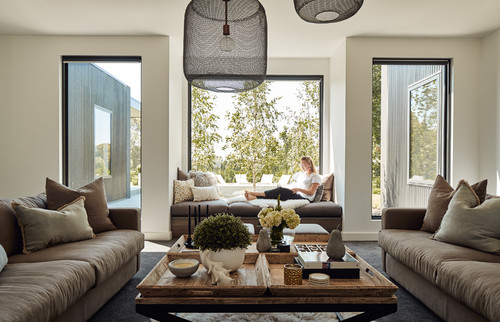
Photo by Atelier Red+Black – Search living room pictures
When you choose a consistent hardware finish, you create a subtle thread that ties the elements of the room together. If you decide to mix finishes, stick to a maximum of two to avoid a cluttered look.
For instance, pairing matte black handles with brass faucets can establish a modern yet timeless feel, ensuring each element stands out while contributing to a unified aesthetic.
This approach not only elevates the design but also adds a layer of sophistication to the space.
Don’t Push Furniture Against Walls
If space allows, pull seating away from walls to create intimate conversation areas.
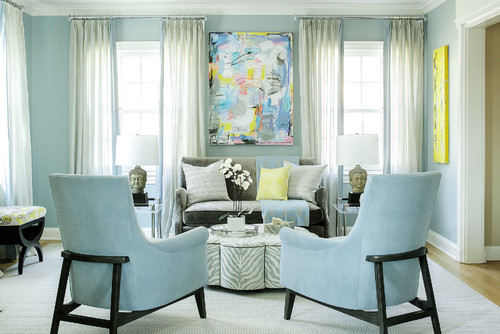
Photo by k+co LIVING – Interiors by Karen B Wolf – More living room photos
Floating furniture, rather than anchoring it to walls, can help define functional areas within a room, enhance flow, and make the space feel more expansive.
Consider using area rugs to further delineate these zones, which can anchor your arrangement and add a layer of warmth and texture to the design.
Opt for Timeless Textiles
Invest in durable fabrics—like cotton, linen, or performance fabrics—to ensure longevity and easier upkeep.
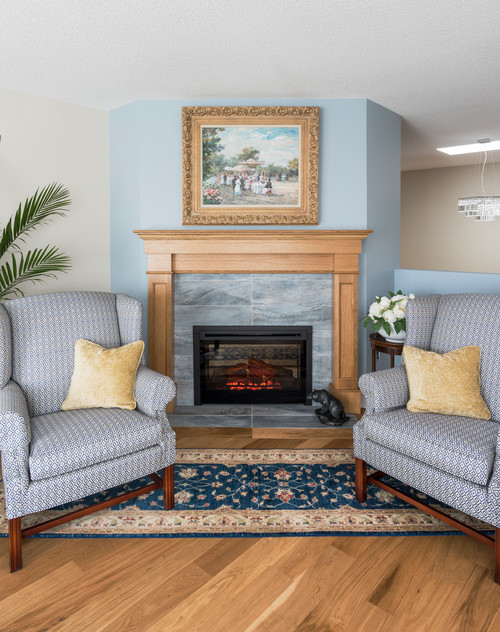
Photo by Trudi Jones Design – More living room photos
Selecting such materials also helps in creating an inviting and comfortable atmosphere, essential for spaces meant for relaxation and gathering.
To enhance the visual appeal, mix textures and layer different textiles, like throws and cushions, to add depth and interest to your living space. This strategy not only elevates the design but also personalizes your living environment, making it uniquely yours.
Play with Symmetry
Pair sofas, chairs, and side tables for a polished, balanced look. Symmetry gives a sense of order.
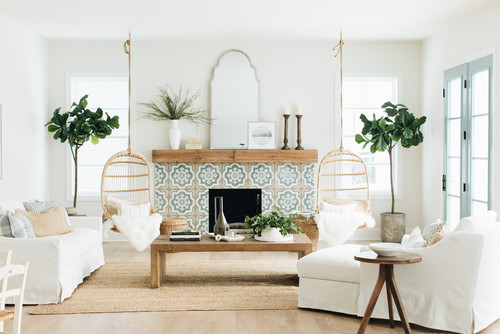
Photo by Timber Trails Development Company – Search living room pictures
While symmetry provides a foundation of balance, incorporating asymmetrical elements can add intrigue and dynamic movement to your living room.
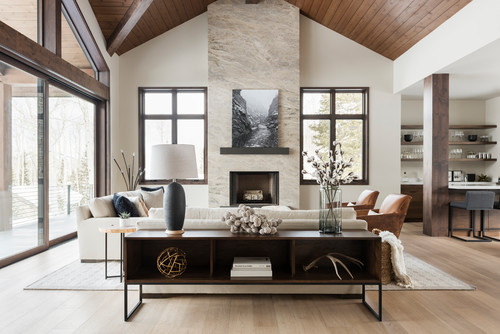
Photo by Hudson + Bloum Design – Browse living room ideas
For instance, an off-center art piece or a varied arrangement of pillows can break the monotony and inject personality.
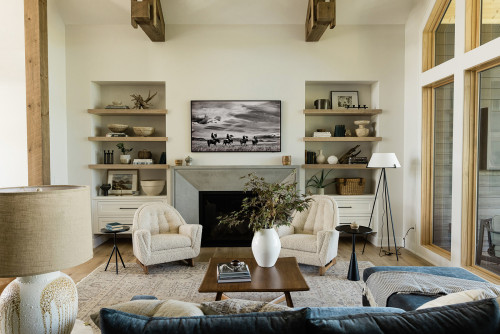
Photo by Morris Lare – Look for living room design inspiration
This approach allows you to maintain an organized aesthetic while introducing an element of surprise, which can draw the eye and make the space more engaging.
Dress Up Walls
Hang artwork or mirrors strategically at eye level (about 57–60 inches from the floor to the center of the piece).

Photo by Esmaili Rugs and Antiques, Inc. – Search living room pictures
This method, often used by galleries and museums, ensures that the displayed items naturally meet the gaze of most viewers, enhancing the visual appeal of your living space.
Beyond positioning, consider the scale and theme of wall decor to complement the overall design.
Large canvases or grouped smaller pieces can serve as a statement feature, especially in a room with minimalistic furniture or neutral tones.
This not only personalizes the space but also creates a focal point that adds depth and character.
Consider a Gallery Wall
Group framed photos or artworks in a cohesive layout for a personal yet designer vibe.

Photo by Diamond Custom Homes, Inc. – Discover living room design ideas
When curating a gallery wall, maintain a unifying element to achieve a harmonious look—this could be a consistent frame style or color scheme.
Arrange pieces with varying sizes and orientations to keep the display dynamic yet cohesive.
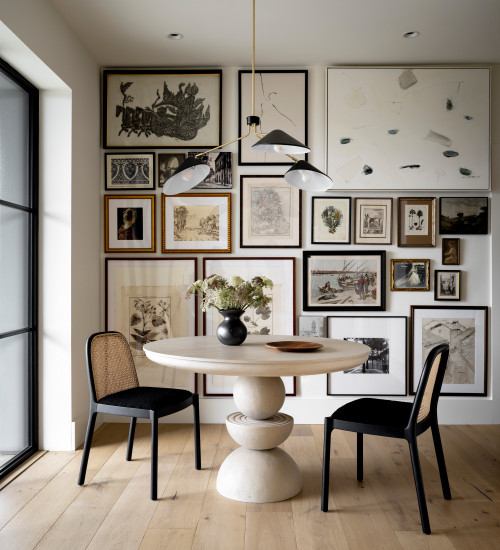
Photo by Richardson Pribuss Architects – Discover dining room design inspiration
Start by placing the largest piece at the center or slightly off-center to anchor your arrangement, then surround it with smaller pieces, maintaining uniform spacing for visual balance.
This approach not only showcases your personal style but also turns the wall into a captivating focal point in the room.
Layer Your Lighting
Incorporate overhead fixtures, table lamps, and floor lamps to create a warm, inviting atmosphere at all times of day.
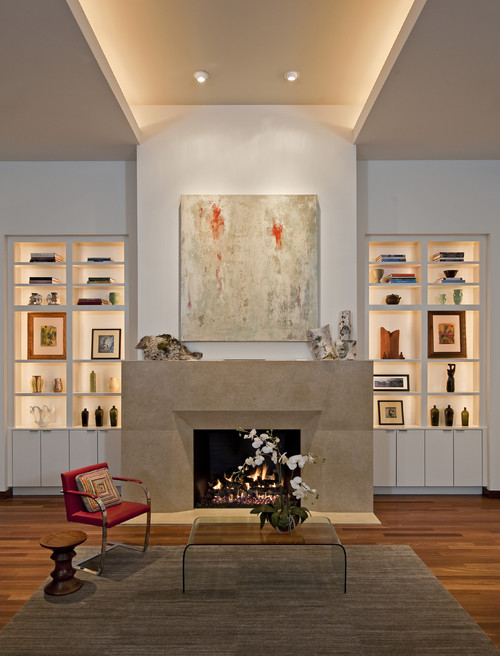
Photo by Bulhon Design Associates – Discover living room design ideas
To achieve a layered lighting look, vary the intensity and direction of light sources to enhance the functionality and mood of the room.
Use dimmable overhead lighting for a customizable ambiance, and add focused lighting, such as reading lamps, to support specific activities.
Accent lights can highlight architectural features or artworks, adding depth and drama to the space.
This strategic distribution not only improves the room’s functionality but also contributes to an aesthetically pleasing environment that adapts to any occasion.
Consider Traffic Flow
Leave at least 2–3 feet of space for walkways around your furniture layout to keep it comfortable and accessible.
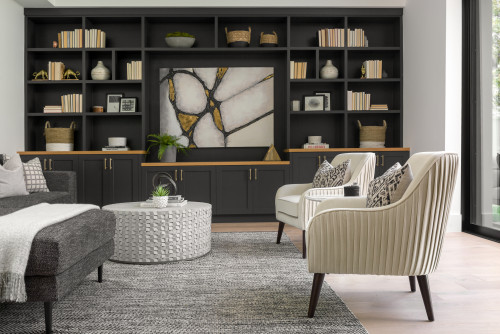
Photo by Bella Casa Luxury Home Staging – Browse living room photos
When planning your layout, ensure that the paths between the furniture do not cut through conversation areas, to maintain a comfortable and cohesive atmosphere.
Arrange seating in a way that encourages easy movement and interaction, while also defining distinct zones within the room, such as a reading nook or entertainment area.
This thoughtful arrangement not only enhances the functionality of the space but also ensures it feels welcoming and fluid, making it easy for family and guests to navigate and relax.
Mind Your Scale
Match furniture sizes to room proportions. Oversized pieces can overwhelm small spaces; undersized pieces get lost in large rooms.
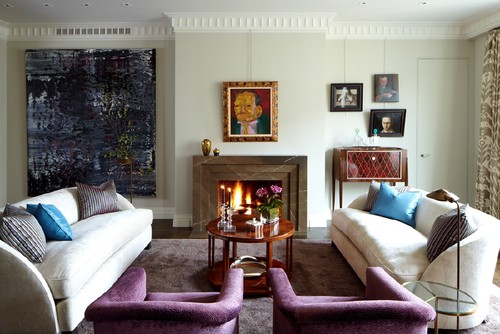
Photo by Rusk Renovations – Browse living room photos
To maintain balance, consider the visual weight of your furniture in relation to the room.
Use larger, heavier pieces in bigger rooms to anchor the space and smaller, lighter pieces in compact areas to avoid clutter.
Also, pay attention to the height of the furniture: tall bookshelves or lamps can draw the eye upward in rooms with high ceilings, while lower-profile sofas and coffee tables might better suit spaces with lower ceilings.
This careful consideration of scale not only enhances comfort but also optimizes the aesthetic harmony and functionality of the living room.
Experiment with Patterns
Mix large-scale and small-scale patterns for interest—just keep the color palette consistent.
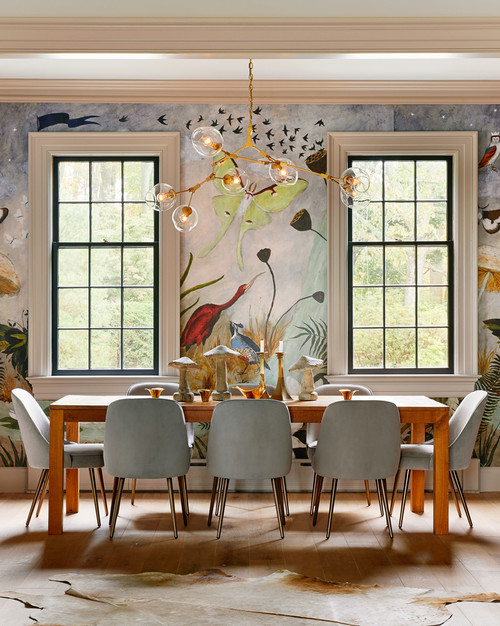
Photo by Noble Construction Management Inc. – Search dining room design ideas
To successfully mix patterns without overwhelming the space, start with a dominant pattern, such as a large floral or bold geometric, and complement it with subtler designs.
Consider the scale and spacing of patterns to ensure they don’t clash.
For a cohesive look, use a common color that ties the various patterns together.
This strategy allows you to play with a variety of textures and designs while maintaining a unified aesthetic that feels intentional and expertly curated.
Introduce Textures
Layer plush throws, patterned pillows, and natural woven materials to make the space feel cozy and visually compelling.
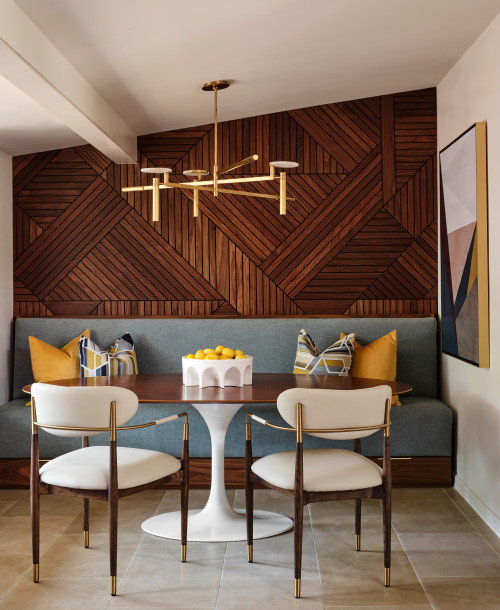
Photo by Haven Design and Construction – More dining room ideas
Consider pairing smooth leather furniture with fluffy area rugs, or glossy wood surfaces with matte ceramics.
These textural contrasts can help to define different zones within the room and make each sitting area feel distinct and inviting.
By thoughtfully layering soft fabrics against harder materials, you create a dynamic and inviting space that appeals to the senses.
Pick a Statement Rug
An area rug should comfortably fit under all major furniture pieces in the seating area. This anchors the room visually.
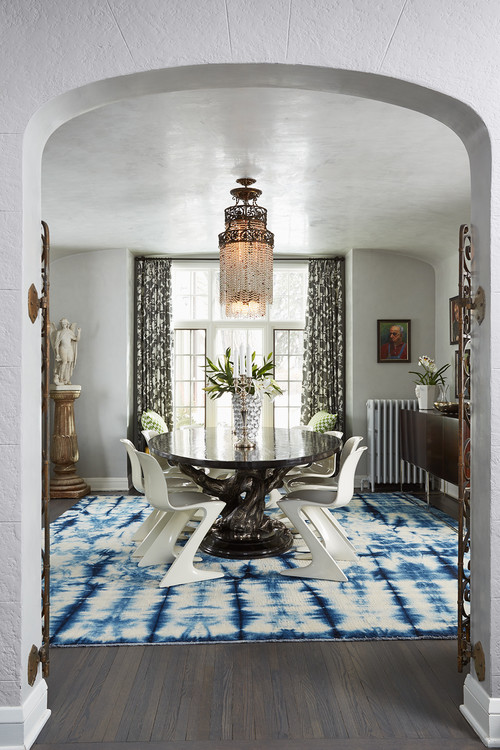
Photo by Andrew Flesher Interiors – Discover dining room design ideas
Choosing a statement rug can dramatically transform the aesthetic and atmosphere of your living room.
Opt for a rug with a bold pattern or vibrant colors to inject personality and warmth into the space.
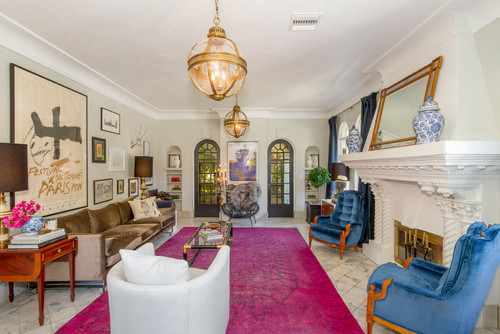
Photo by Lisa & Leroy – Search living room design ideas
When selecting the size, ensure the rug is large enough to either have all the furniture legs on it or at least the front legs of the sofas and chairs.
This helps to unify the seating area and makes the space appear larger and more cohesive.
A well-chosen rug not only grounds your furniture but also acts as a piece of art for the floor, setting the tone for the entire room.
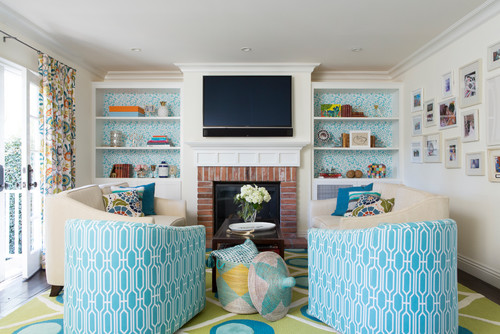
Photo by Coddington Design – Discover living room design ideas
Curate Thoughtful Accents
Display only meaningful décor items that tell a story. Avoid overcrowded surfaces.
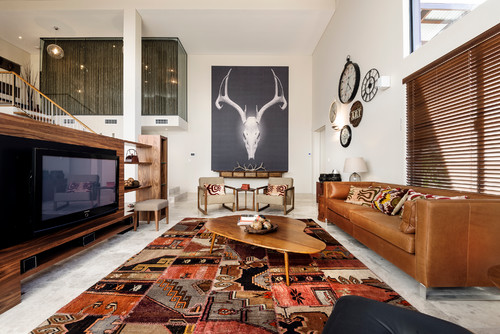
Photo by Jodie Cooper Design – Discover living room design ideas
Select accents that complement the overall design theme while adding personal touches that reflect your tastes and experiences.
Opt for a mix of items in varying heights and textures to create visually interesting vignettes on coffee tables, shelves, and mantels.
This approach not only keeps the space tidy and organized but also ensures that each piece gets the attention it deserves.
Thoughtfully curated accents should enhance the living room’s aesthetic without overwhelming it, making each chosen item a deliberate part of the room’s narrative and charm.
Conclusion
In conclusion, decorating your living room like a designer involves more than just filling the space with beautiful items;
it requires careful consideration of function, style, and personal expression.
By starting with a functional layout, choosing a cohesive color palette, and strategically incorporating various textures and patterns, you can create a living space that is both stylish and comfortable.
Remember to anchor your room with a statement rug and curate thoughtful accents that reflect your personality and tell your unique story.
With these expert tips, your living room will not only look like it was professionally designed but will also feel like a true reflection of your individual aesthetic and lifestyle.







